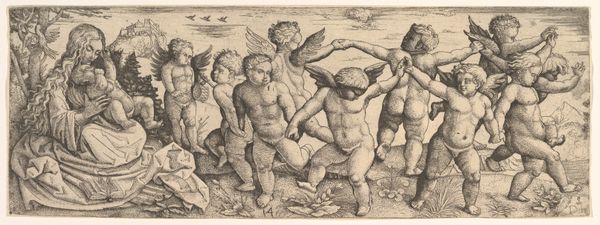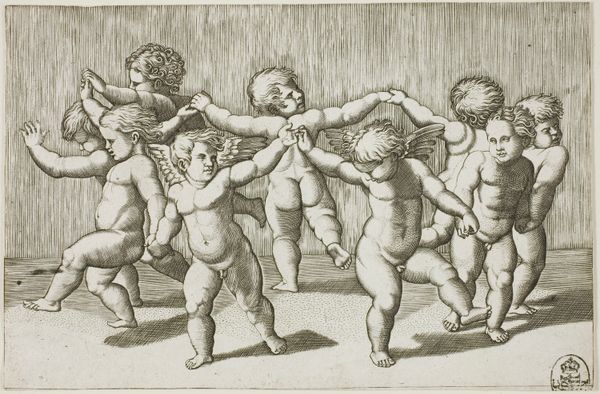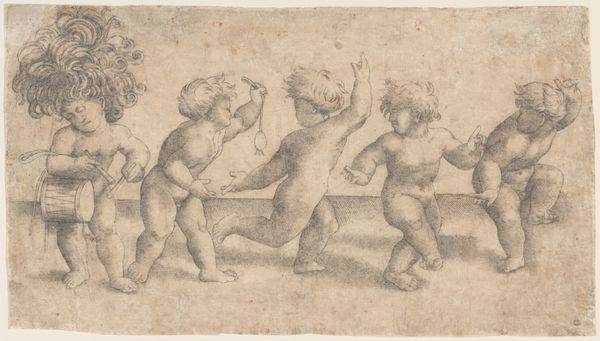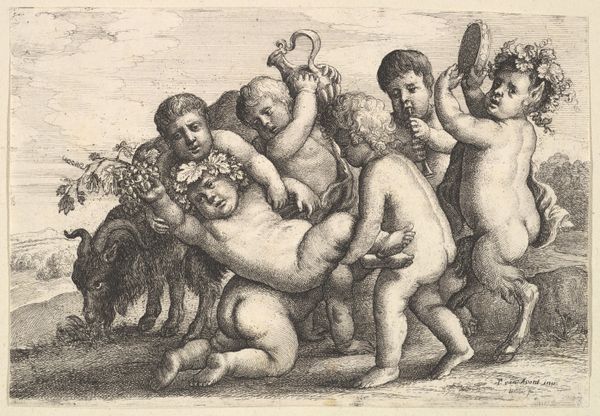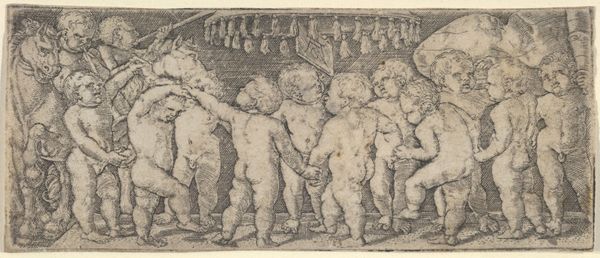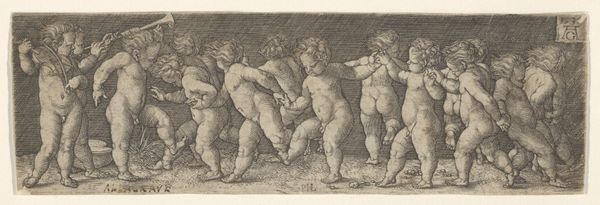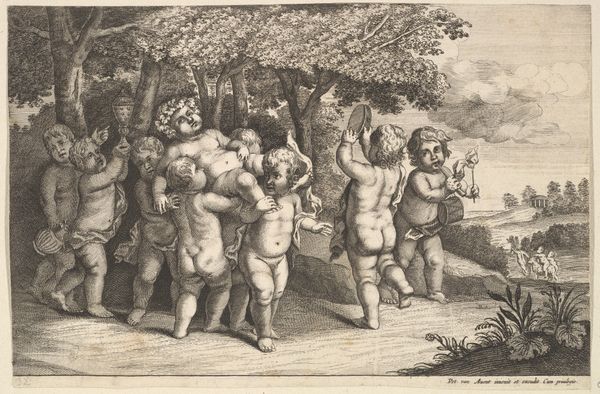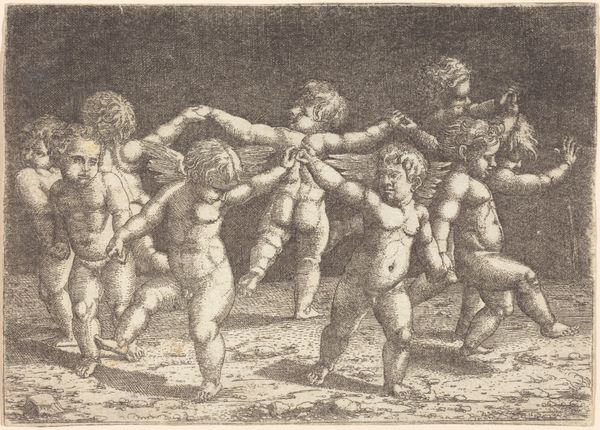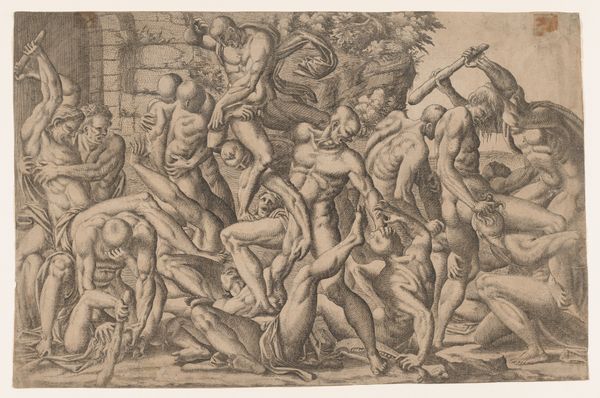
print, engraving
# print
#
figuration
#
genre-painting
#
italian-renaissance
#
nude
#
engraving
Dimensions: sheet: 9.9 x 13 cm (3 7/8 x 5 1/8 in.)
Copyright: National Gallery of Art: CC0 1.0
Curator: Look at this intriguing engraving, "Twelve Children Dancing" by Domenico Campagnola, created in 1517. The figures leap right out. Editor: It strikes me as a strange sort of Bacchanal. An innocent revelry, but those chubby bodies recall classical depictions of Bacchus and his followers. What's your take on Campagnola's method here? Curator: He employs very fine, precise lines in the engraving. Consider that printmaking allowed for a wider dissemination of images than painting, offering increased opportunities for audience engagement with these forms and figures. Editor: Absolutely. Notice also the tamborines some of the children are holding. Sound and motion; they seem caught in a timeless ritual. In older art these actions may evoke notions of cyclical time and perpetual renewal. Do you find those concepts resonant? Curator: What intrigues me is thinking about workshops at the time. Engraving was both craft and art. How were these prints consumed? As accessible art for a rising merchant class perhaps, eager to emulate aristocratic aesthetics at a lower cost? Editor: It makes one wonder about accessibility then as it does today. But considering these children, with their vaguely antique faces, are meant to convey purity and delight, and I can’t help but see in them symbols of joy, perhaps even a touch of Edenic innocence, now rendered affordable for common enjoyment. Curator: Right, considering it, Campagnola masterfully balanced those humanist themes with production concerns, opening Renaissance ideals to more people by changing how art was being disseminated through Europe at the time. Editor: Indeed. His composition, so rooted in older symbol sets, became accessible to broader populations thanks to material innovations in the print world. Interesting stuff!
Comments
No comments
Be the first to comment and join the conversation on the ultimate creative platform.

